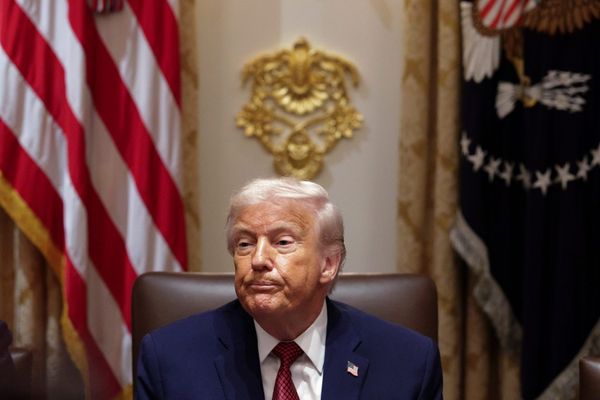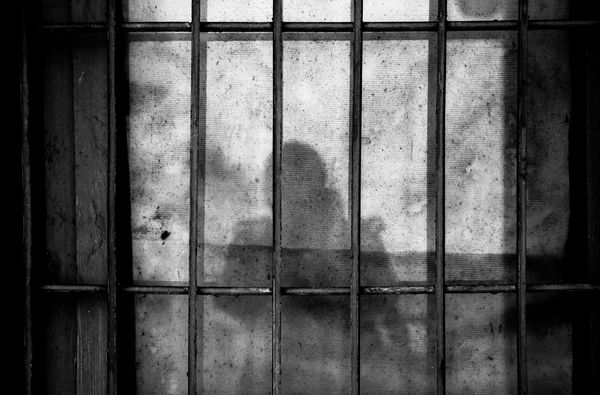
Shape and the midfield
Mikel Arteta is not a clone of Pep Guardiola but they do have a similar outlook on football. Both came through the Barcelona academy, Arteta spent three years as Guardiola’s assistant at Manchester City and both favour a 4-3-3 with a hard press. When shapes and philosophies match, gaining a tactical advantage to outweigh City’s advantages in terms of personnel and form will be tough for Arteta. At the moment, Rodri, Kevin De Bruyne and Ilkay Gündogan or Bernardo Silva are simply a better unit than Arsenal’s three, with Thomas Partey and Martin Ødegaard suffering dips in form and Granit Xhaka struggling with illness.
Is there anything Arsenal can do to tip the balance? Everton, Brentford and Tottenham have taken points off City with a back five, compressing the space, but that was before Guardiola’s side hit the relentless streak of the past two months. Arteta’s dabble with a back five late on at Anfield was unconvincing and given it is by attacking wide that Arsenal will probably pose the greatest goal threat, a shift away from 4-3-3 seems unlikely.
Haaland v Holding
What if William Saliba had stayed fit? It should be remembered how he was physically dominated by Ivan Toney but, still, it seems less likely that Arsenal would have conceded seven goals in their past three games had Saliba been there. Which is not to scapegoat Rob Holding: rather he is a symptom of the lack of squad depth that meant few regarded Arsenal as title challengers at the start of the season. Now, after struggling against Michail Antonio and Carlos Alcaraz, Holding faces Erling Haaland.

Or does he? Takehiro Tomiyasu is injured but there are other options. Bringing in Jakub Kiwior, signed from Spezia in January, for a first Premier League start would seem an enormous risk, but he is a Poland international. There is the possibility of moving Ben White into the centre and either shifting Partey to right-back with Jorginho coming in to midfield or, probably more likely, using Kieran Tierney inverted, as he has played on occasions for Scotland. Tierney at right-back has the advantage that when Jack Grealish cuts inside, he would be attacking Tierney on his stronger foot – and Arteta was concerned enough by the threat of Grealish in the game at the Emirates that he preferred Tomiyasu to White because of his quality in one-on-one duels.
Is there anywhere Arsenal can hurt City?
Perhaps the one area where Arsenal may spy an opportunity is on the flanks. The injury to Nathan Aké and the departure of João Cancelo in January means that City will probably field Aymeric Laporte or, less likely, Sergio Gómez at left-back (Guardiola surely won’t repeat the Emirates experiment of playing Bernardo Silva there). Bukayo Saka should relish the chance to run at either a repurposed central defender or somebody who has never previously started a Premier League game.
Guardiola has far more options on the right but recent team selections suggest he will overlook Kyle Walker and Rico Lewis for John Stones or Manuel Akanji, with the other of that duo playing as the right-sided centre-back. If it is Stones, and he does step into midfield, taking up the position of an old-fashioned wing-half when City have the ball, it’s possible there could be space for Gabriel Martinelli to surge into on the Arsenal left – although shutting that down is something City have been very good at.
Set plays
Up until the end of January, in the first 16 league games of the season, Arsenal had not conceded a goal from a set play. Then James Tarkowski headed the winner from a Dwight McNeil corner for Everton and the world suddenly became aware that Arsenal were vulnerable to inswinging deliveries. Aaron Ramsdale, his early mistake against Southampton notwithstanding, has had an excellent season, but he is not the most dominant goalkeeper in a crowded area. Tarkowski’s was the first of four goals conceded from crossed set plays this season, and other sides, notably Brentford, have caused Arsenal major problems from corners. Against a Guardiola side that might not seem too much of a disadvantage, but City have become adept from set plays this season. They have scored five league goals from set plays, and four of Haaland’s five goals at home against RB Leipzig stemmed from corners.

Lessons from Bayern?
Bayern lost their Champions League quarter-final to Manchester City 4-1 on aggregate but they caused City as many problems as anybody has over the past couple of months. Guardiola sides, by their nature, will always have a vulnerability to balls in behind their defensive line. It is trying to mitigate that risk of the counterattack that has underlain most of Guardiola’s more unexpected lineups and also led to the use of Stones as an auxiliary midfielder.
But Bayern, with pace in forward areas, did create chances and with better finishing from Leroy Sané, or had Jamal Musiala not slipped when well placed, they might have got a goal that could at least have unsettled City. Counterattacking should be an Arsenal strength. They have, in Gabriel Jesus, a centre-forward adept at dropping deep to spring the two wide forwards. Ødegaard, on song, should be able to pick passes to release runners.
The presence of Haaland, meanwhile, means City tend to play the ball forward quicker, which in turns means they never have quite the control they have had at previous peaks. City have conceded 28 league goals, two more than in the entirety of last season and five more than in 2018-19. But equally, with Haaland, City no longer have to be so precise in their buildup; they no longer have to dominate games to win them.







